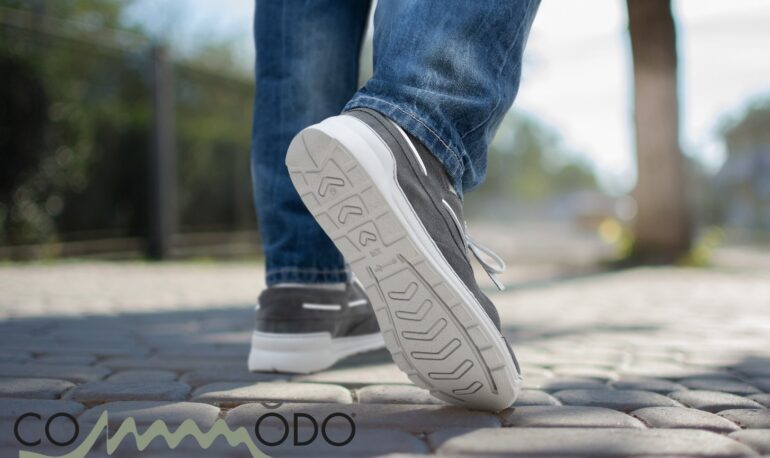
In the last article we talked about the characteristics and the differences between plastic materials useful for the production of soles (click on the link in case you missed it) instead this time we want to focus on the deepening of the TPU family, the so-called thermoplastic polyurethane and its derivatives, especially with regard to the constant push that in recent years has concerned the paradigms imposed by the environmental challenge and the Green Economy.
The continuous research for materials that could give us the opportunity to reduce environmental contamination and consequently pollute less, has opened many doors to new possibilities, and this obviously within the footwear market too.
The unstoppable technological innovations have in fact led to a real evolution of the TPU and, consequently, to the birth of the so called Green materials.
Currently, we categorize three different types of materials defined ecological:
Recycled Materials;
Eco-sustainable materials;
Biodegradable Materials.
But let’s go into detail.
Recycled Materials
When we allude to this category, we refer to products in which the composition reaches up to 90% of recycled material.
In order to achieve such a high percentage, these materials must go through a process called ennobling.
After being used in production development, and following an inevitable loss of physical-mechanical characteristics, we proceed to a mixture with the material commonly known as traditional in order to allow and achieve an acceptable level of the aforementioned characteristics, which is still above average for a product considered suitable for daily use. Within this category, are included the materials defined as Thermoplastics, which means that once used, they can be shredded and reinserted into the production process, as well as production waste. One issue that deserves attention, however, is the one concerning colors.
In the past, regenerated material passed through a mixing procedure with pure materials, which tended to be black or in any case high covering. Over time, however, numerous techniques have been developed and they allow us today to find a regenerated colored on the market and this clearly leads to a considerable improvement in the technical characteristics too. The usual percentage of this admixture useful to increase the homogeneity of the color, is (on a basis of 100):
– 50% of pure material;
– 50% of recycled material .
In respect of this, communications and certificates must attest “Material with 45% recycled”.
On white products, it is not uncommon to find black dots of variable size, but this is an inevitable feature if we consider that we are faced with a white material that has gone through a process of mixing with regenerated material: as the percentage of recycled used increases, these small impurities will also proportionally increase.
One final element that must be taken into account is obviously the price.
If the recycled could appear a bit limiting in reference to the chromatic gradations, in particular when related to transparent and clear colour, on the other side there is no substantial change in the final appearance of the product, except for a lower elasticity.
Eco-sustainable materials
This second category concerns materials produced with polymers, which pass through a transformation process via the use of renewable sources and vegetable origin, thus reaching the reduction of a percentage close to 40% of absorption of non-renewable energy.
Nowadays, this method appears to be the most suitable solution in order not to incur in significant variations regarding the quality of the products.
As a matter of fact, eco-sustainable materials enjoy very similar physical and mechanical characteristics when compared traditional materials.
The term eco-sustainable however, does not only concern raw materials, but also the transformation process in which the product passes through.
By means of a value expressed as a percentage (%), each step must be certified, ascertaining that the materials used were actually from renewable sources (photovoltaic, wind power plants and/or water plants) and not fossil.
Products derived from eco-sustainable materials tend to be slightly penalized in terms of visual appearance, and this is because they are subject to being more opaline as well as to become opaque over time.
As for recycled material, in this case too the basic colors are different from traditional materials.
Overall, however, the appearance does not undergo significant changes.
A considerable element to keep in mind is the price, which will be proportional and subordinated to the percentage of cut with classic material: as this increases, the price will decrease. Precisely in this regard, there are preparations on the market, in which the percentage of material used for products from renewable sources is expressly declared.
Biodegradable Materials
The last categorization concerns the biodegradable or organic, and in this case we go into the process of modifying the polymer itself. This is because biodegradable materials, therefore produced with polymers of non-fossil sources, can be composted with the help of very specific processes.
With the term compostable we refer to the process by which, arriving at a certain temperature and by means of a certain pressure, it is possible to create components capable of degrading, so, able to eat these plastics.
As in the case of the two previous families, here too, the materials can be cut with others, coming both from renewable sources and with the so-called classic materials.
Although in many sectors biodegradable has managed to make its way, proposing itself as a valid alternative to traditional solutions, in the footwear market, this unfortunately has not occurred yet.
The explanation is quite simple, what changes is the stress of use.
Having to support the entire mass of a human being, the percentage of resistance required to the soles is quite high, and also having to interface with the most disparate climatic situations, the possibility that the same will be ruined is decidedly high.
Fundamentally, the physical-mechanical characteristics related to these materials are currently limited, the quality standards are not constant and a quality standard equivalent to classic materials or non-renewable sources has not been reached.
The problem of color persists in this case too and there is no adaptability to transparent gradations.
We also face a bigger difficulty in processing and molding, without considering that composting this material is rather complex, as certain characteristics are necessary and there are few waste treatment plan able to deal with it today.
To summarize, if the first two categories are definitely usable, and although there are biodegradable materials with standards and percentages considered acceptable, we have not yet reached the point of being able to use them so widely as the two previous families. Nevertheless, research is constantly moving and we are sure that in the future it will be even easier to move to a Greenest economy.





